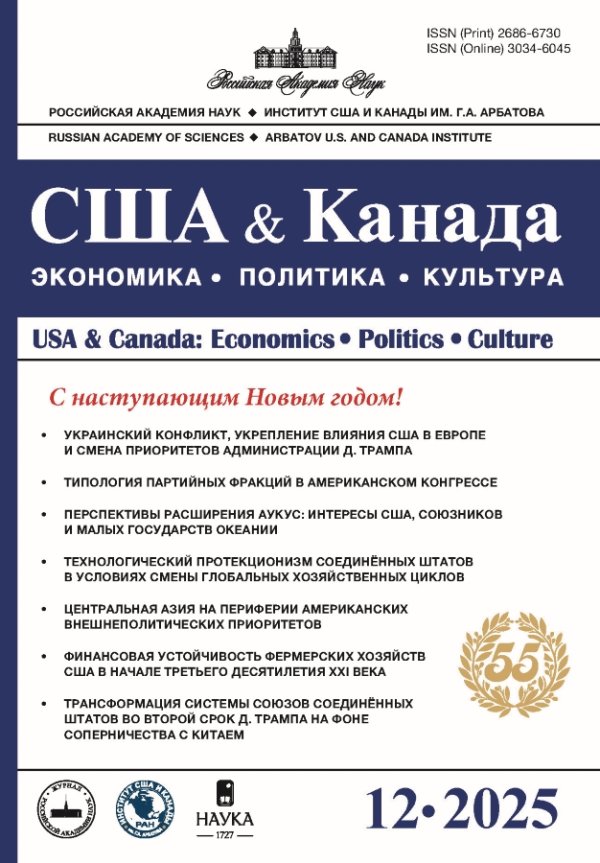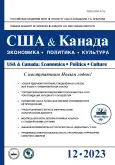Теория международных отношений на примере взаимодействия США и Китая
- Авторы: Козлов В.О.1
-
Учреждения:
- Институт США и Канады им. Г.А. Арбатова РАН (ИСКРАН)
- Выпуск: № 12 (2023)
- Страницы: 33-41
- Раздел: Статьи
- URL: https://journals.rcsi.science/2686-6730/article/view/233816
- DOI: https://doi.org/10.31857/S2686673023120039
- EDN: https://elibrary.ru/NYHZOO
- ID: 233816
Цитировать
Полный текст
Аннотация
Ключевые слова
Об авторах
Вадим Олегович Козлов
Институт США и Канады им. Г.А. Арбатова РАН (ИСКРАН)
Email: kozlov-vadm@yandex.ru
Москва, Российская Федерация
Список литературы
- Allison, G. Destined for War: Can America and China Escape Thucydides's Trap? Brazilian Political Science Review, 2018, 8. P. 2-17.
- Azpíroz, M.L. Framing and Political Discourse Analysis: Bush's trip to Europe in 2005. Observatorio, 2014, 8(3), pp. 75-96.
- Boulding, K.E. National Images and International Systems. The Journal of Conflict Resolution, 1959, 3(2), pp. 120-131.
- Boulding, K.E. The Image: Knowledge in Life and Society. University of Michigan Press. Chicago, 1956. 172 p.
- Cho, Y.C., Hwang, Y. Mainstream IR Theoretical Perspectives and Rising China Vis-À-Vis the West: The Logic of Conquest, Conversion and Socialisation. Journal of Chinese Political Science. 2019. Available at: https://link.springer.com/article/10.1007/s11366-019-09620-3
- De Graaff, N. US-China Relations and the Liberal World Order: Contending Elites, Colliding Visions.International Affairs, 2018, 94(1) pp. 113-131.
- Dichter, E. What's in an image. The Journal of Consumer Marketing. 1985. No. 1, P. 75-81.
- Goffman, E. Frame analysis: An essay on the organization of experience. CA.: Harvard University Press, 1974. 586 p.
- Goh, E. Constructing the U.S. Rapprochement with China, 1961-1974: From "Red Menace" to "Tacit Ally". New York: Cambridge UP, 2005. 316 p.
- Golan, G. J., and Lukito, J. The Rise of the Dragon? Framing China's Global Leadership. Elite American Newspapers, International Communication Gazette. 2015, 77(8), pp. 754-772.
- Hall, S. Representation. Cultural Representations and Signifying Practices. London: Sage/The Open University, 1997. 395 p.
- Jespersen, Ch. American Images of China, 1931-1949. Stanford, California: Stanford University Press, 1996. 254 p.
- Latham, A.A. China in the Contemporary American Geopolitical Imagination. Asian Affairs, 2001, 28(3), pp. 138-145.
- Li, H.Introduction: Image and Perception in U.S.-China Relations, in Li, H. and Zh. Hong (eds.) Image, perception, and the making of U.S.-China relations. Lanham, Maryland: University Press of America, 1998. P. 10-24.
- Lippmann, W. Public Opinion. N.Y.: Macmillan, 1960. 214 p.
- Mawdsley, E. Fu Manchu versus Dr. Livingstone in the Dark Continent? Representing China, Africa and the West in British broadsheet newspapers. Political Geography, 2008, 27, pp. 509-529.
- Miller, S.C. The unwelcome immigrant: the American image of the Chinese, 1785-1882. Berkely and Los Angeles: University of California Press, 1969. 259 p.
- Ooi, S., D'Arcangelis, G. Framing China: Discourses of Othering in US News and Political Rhetoric. Global Media and China, 2018, 2(3-4), pp. 269-283.
- Pan, Ch. and Kavalski, E. Theorizing China's Rise in and beyond International Relations.International Relations of the Asia-Pacific, 2018, 18(3), pp. 289-311.
- Said, E. Orientalism. NY.: Pantheon Books, 1978. 350 p.
- Scott, D. China and the International System, 1840-1949: Power, Presence, and Perceptions in a Century of Humiliation, Albany: State University of New York, 2009. 358 p.
- Song, W. Securitization of the ‘China Threat' Discourse: A Poststructuralist Account. China Review, 2015, 15(1). pp. 145-169.
- Tang, M. Metaphorical Mirrors of the West: China in the British Economic Press. Historia y comunicación social, 2017, 22(2), pp. 397-413.
- Tuathail, G.O. (Dis)Placing Geopolitics: Writing on the Maps of Global Politics. Environment and Planning D: Society and Space. 1994, 12(5), pp. 525-546.
- Tunsjø, Ø. US Taiwan Policy: Constructing the Triangle. New York: Routledge, 2008. 194 p.
- Yee, H. and Storey, I. The China Threat: Perceptions, Myths and Reality London. New York: Routledge. 2002. 412 p.
- Vukovich, D. China and Orientalism. London: Routledge, 2012. 208 p.
- Webb, J. Understanding representation. London: Sage, 2008.176 p.
- Yan, F. Image, Reality and Media Construction: A Frame Analysis of German Media Representations of China. Singapore: Springer. 2020. 249 p.
Дополнительные файлы










